If you've read my previous post, you’d have guessed that I have a not-so-secret love affair with chocolate. So, when I was thinking about how to kick off my list of “100 Things that keep me going,” chocolate came naturally at the top of my list.
The other day, I listened to an episode of Just One Thing with the late Michael Mosley, in which he interviewed Professor Aedin Cassidy from the University of East Anglia. Their conversation lingered on the pleasures – and profound health benefits – of snacking on quality dark chocolate. Professor Cassidy’s research paints a fascinating picture of how flavonoids in cacao can reduce high blood pressure, sharpen cognitive function (a little memory boost, anyone?), and of course, lift your mood. Despite cacao butter being 60% saturated fat, it surprisingly does not raise cholesterol levels. So, for obvious reasons, I feel no guilt when snacking dark chocolate, especially after a long difficult work meeting or as a boost before a challenging task.
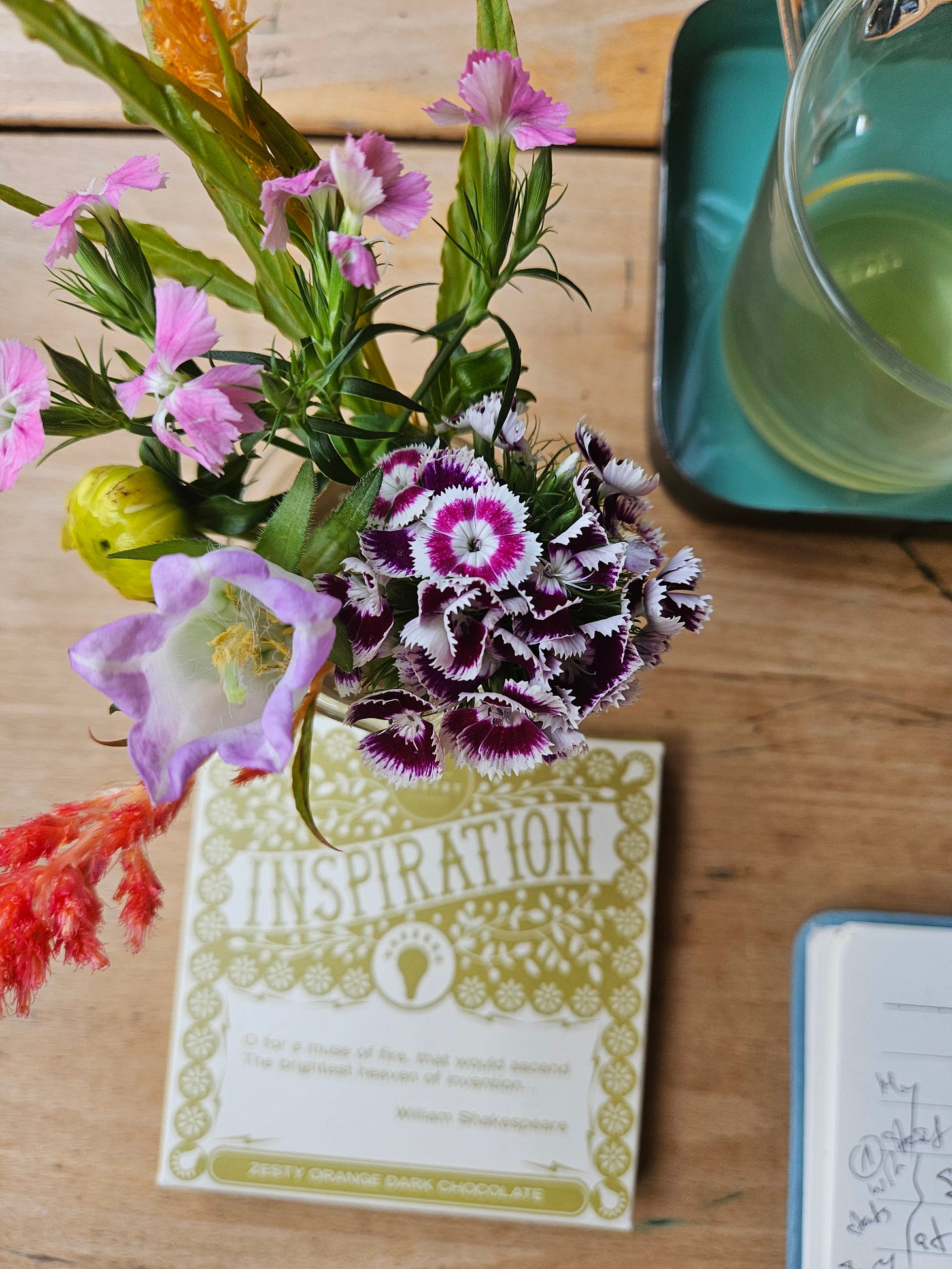
Our fascination for chocolate isn’t a new thing. The ancient Maya and Aztecs enjoyed their chocolate as a frothy, spicy drink. They’d grind up cacao beans, mix them with water, and add spices like chilli or vanilla. It wasn’t sweet like the hot chocolate we know today. In fact, it was quite bitter and it was often reserved for warriors and the elite. Apparently, the Maya believed cacao was a gift from the gods, and drinking chocolate was thought to bring you closer to them. And, there is more: chocolate has a fascinating history as a medicinal superstar, too. Both the Maya and Aztecs believed it had the power to heal. It was used to treat everything from fevers and stomach troubles to fatigue. And when chocolate made its way to Europe, it carried on this tradition. Doctors prescribed it for ailments like indigestion, and they even believed it could strengthen your heart. To me, these (delicious) facts sound more like myths, but imagine being told to eat chocolate as medicine today – yes, please!
I remember how a few years ago, during a creative session at work, we were asked to share our favourite chocolate and how it reflects our personality. I’m not a big fan of ice-breakers, but the idea seemed to resonate with my colleagues and they started swapping stories of Yorkie bars and Terry’s Chocolate Orange, explaining how their chocolate choices unveiled hidden layers of their character. As my turn was approaching, all I could think about was my own favourite: dark chocolate. Plain, strong, sometimes with a hint of orange or dried raspberries. And then the question hit me: What does that say about me? That I’m bitter? Plain? Not much fun? All the interpretations reverberated in my head.
When it was finally my turn, I just said:
“Dark chocolate – the best quality I can get, with nothing added.”
“Because…?” the facilitator nudged.
“Because with me, you get the real thing. No sugar-coating, no fluff – just honest, straight talk.”
The room went quiet for a moment, and then we moved on to the next, more interesting and exciting chocolate choices. But what I said made me pause. It got me thinking about how, even in places that encourage us to “bring our whole selves to work” (I’m sure you’ve heard that phrase a million times), there’s still an unspoken expectation to fit in, to mould ourselves into something easy to digest. And this is especially true for those of us with diverse cultural backgrounds.
Cultural clashes in the workplace
Although I’ve lived in the UK for 20 years, my communication style is still influenced by where I grew up. Back home, directness is not only accepted but expected. It’s a mark of honesty, of efficiency. Here in the UK, I’ve often found myself softening my natural approach, especially in work environments. But even then, I sometimes sense that my openness, particularly when giving feedback, is seen as blunt, perhaps even abrasive. British culture holds politeness as a quiet virtue, skirting around difficult conversations to stay away from discomfort. In my culture, such behaviour would be labelled as evasive, even two-faced.
Over the years, I’ve had to adapt – becoming more aware of when to soften my approach and to become more palatable to the British taste. However, deep down, I can’t shake the feeling that by doing so, I’m dimming a part of who I am. And this is where the cultural clash lies. The truth is, many workplaces may champion diversity and inclusion on paper, but in practice, there’s often a lack of real understanding of what it means to create a truly inclusive environment and how to lead diverse teams.
It’s no secret that cultural differences in communication, expectations and behaviour can lead to misunderstandings, which in turn can affect team dynamics and productivity. True diversity for me isn’t just about ticking a box. It’s about creating spaces where differences – whether in communication, perspective, or background – are welcomed. In theory, we’re told to bring our unique perspectives and backgrounds to the table. But in reality, we’re often expected to conform to the status quo. In many instances, fitting in seems to be valued more than standing out. I think that’s where the real challenge lies. Real inclusion should be about creating spaces where these differences aren’t just tolerated but they’re actually celebrated.
My top 5 dark chocolates
I didn’t mean to shift my note to diversity in the workplace but it happened. Now, back to the less controversial stuff: chocolate. If you’re as obsessed with dark chocolate as I am, here are my top picks.
And before you dive in, remember: slow down and savour the experience. As Spencer Hyman, founder of Cocoa Runners, suggests, first, snap your chocolate, then let it rest on your tongue and breathe in the flavours. Chocolate tasting, when done right, is a whole sensory experience.
Green & Black's Organic 85% Dark Chocolate – A classic for a reason. Smooth, rich and sustainably sourced.
CocoPzazz's Inspiration Dark Chocolate – 70.1% cocoa with natural vanilla and orange oil. I discovered it in the Poetry Pharmacy in central London, and it’s become a favourite.
HU Hazelnut Butter Dark Chocolate – 70% cocoa, organic, vegan, and paleo. You can find it in any Planet Organic store or online, and it’s a must-try for nut lovers.
Dark Chocolate with Dried Raspberries – Found at my local shop in East London, but available elsewhere. The tangy sweetness of the raspberries cuts through the richness of the chocolate beautifully.
Dark Chocolate Bar with Spiced Rum, Chilli & Caribbean Crunch from Arthouse Unlimited, a charity that showcases the artistic talents and skills of adults who live with diverse learning and physical disabilities. Merge taste with purpose, and I’m all in.
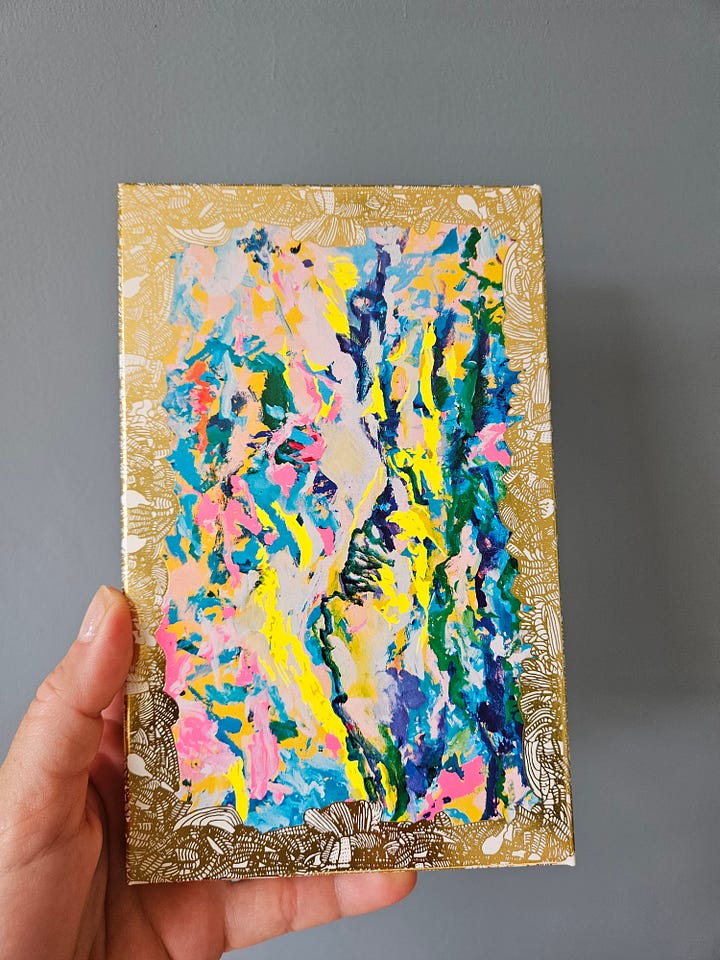
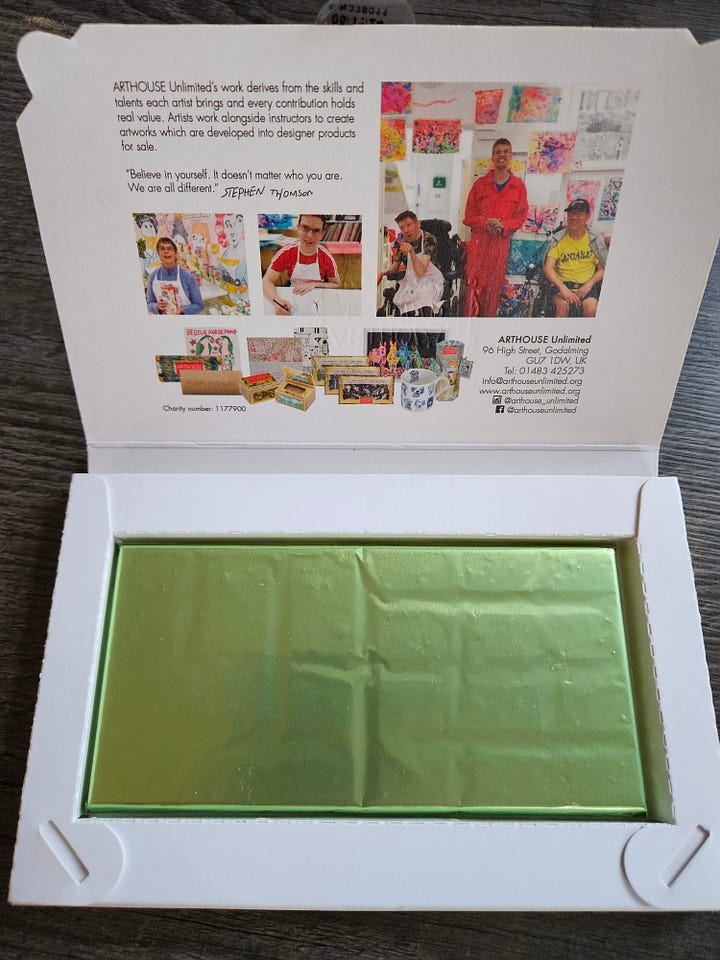
I’ve also learned how to make my own delicious, quick and easy chocolate. Let me know if you want the recipe and I can share it with you.
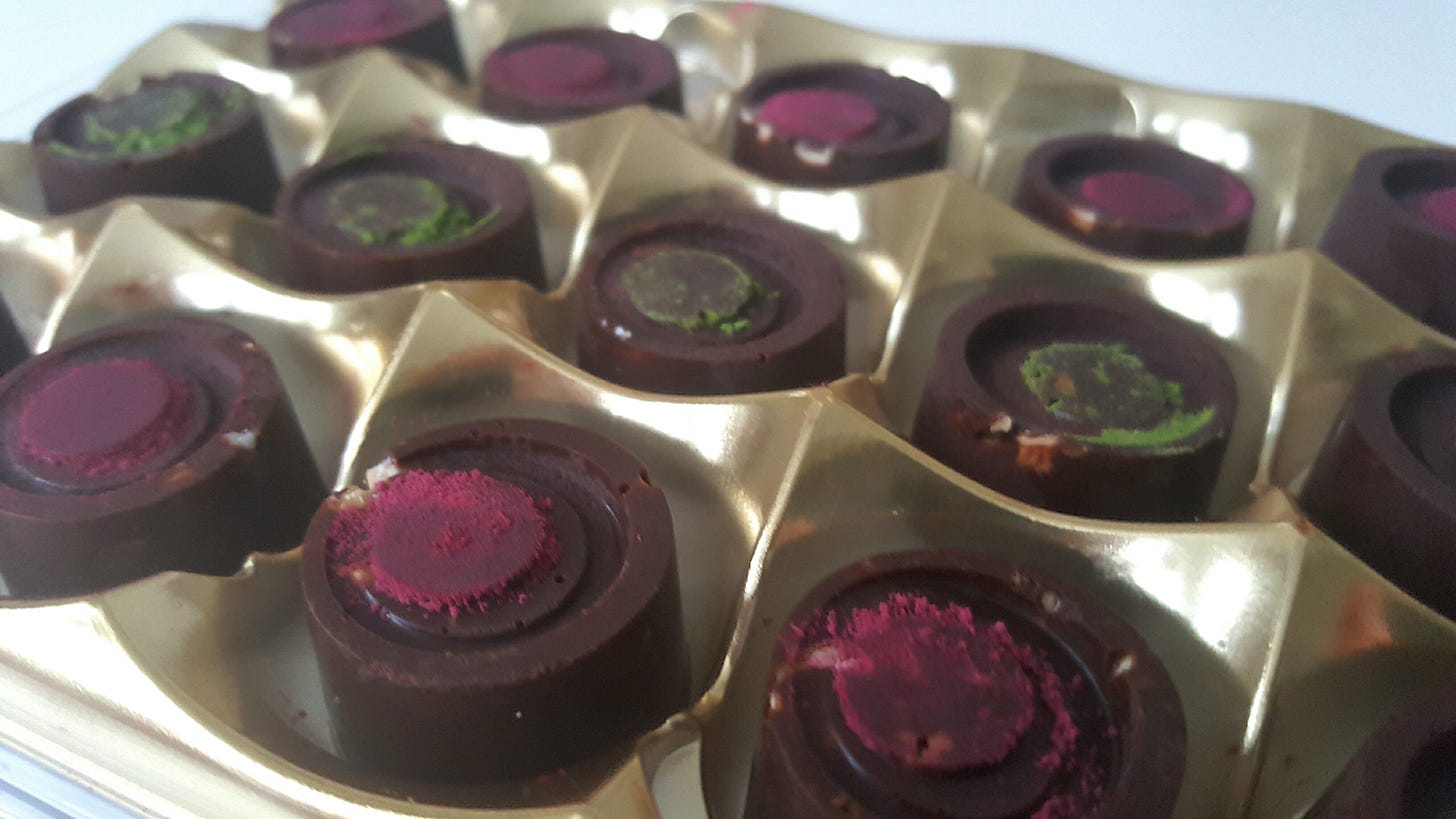
If this post has given you food for thought (or simply made you crave chocolate), feel free to share it with a friend or subscribe to my newsletter and support my work.
I’d also love you to share your favourite chocolates (no need to explain how they describe your personality - unless you want to share it. ;-) ).
Until next time,
Nataliya x





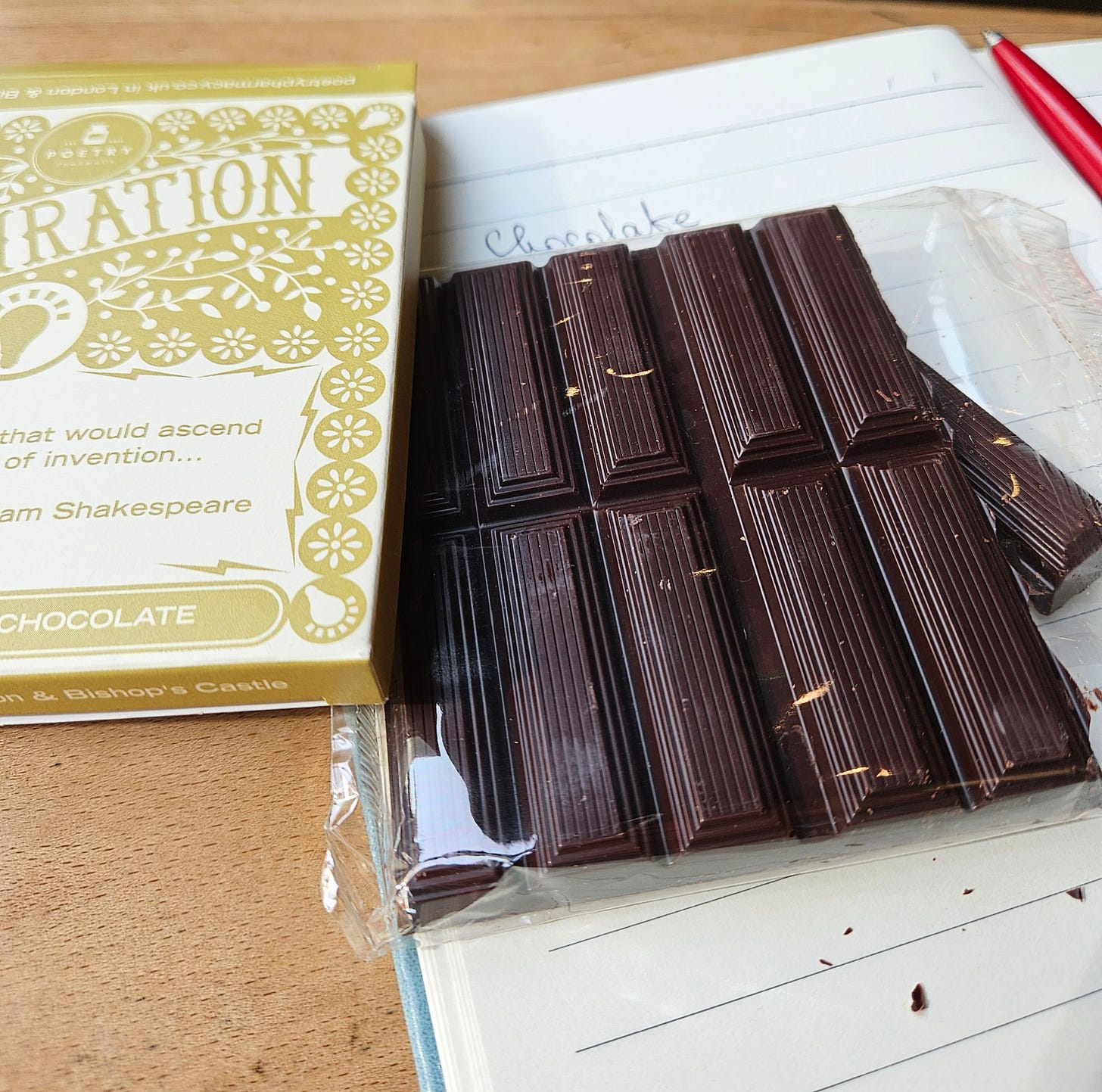
I've never managed to get into dark chocolate at all - I find it so bitter and unpleasant! But I may give some of your favourites a try x
How interesting! The blend of sweetness and bitterness, without anything crunchy or chewy, is what makes it so delicious for me.